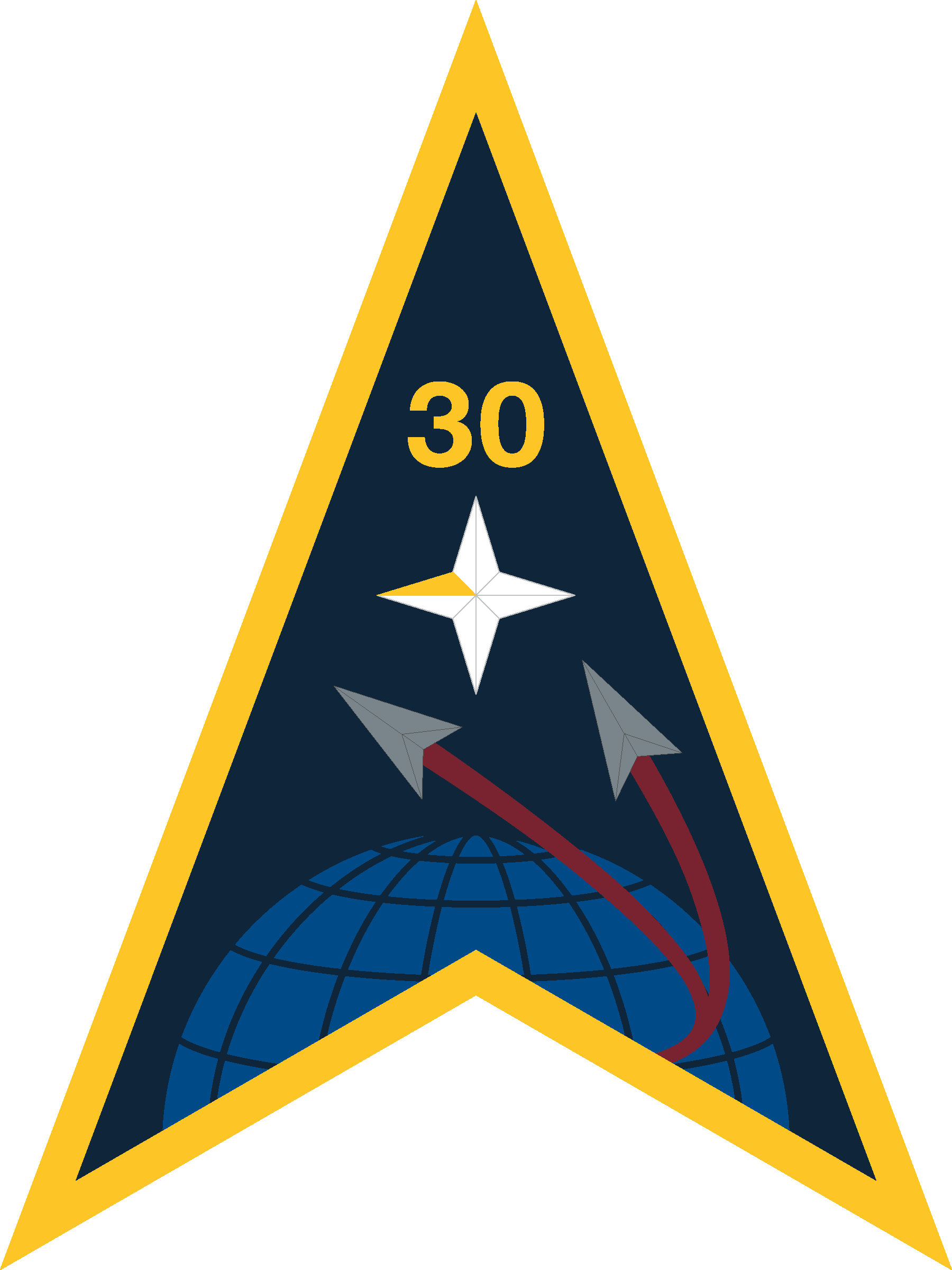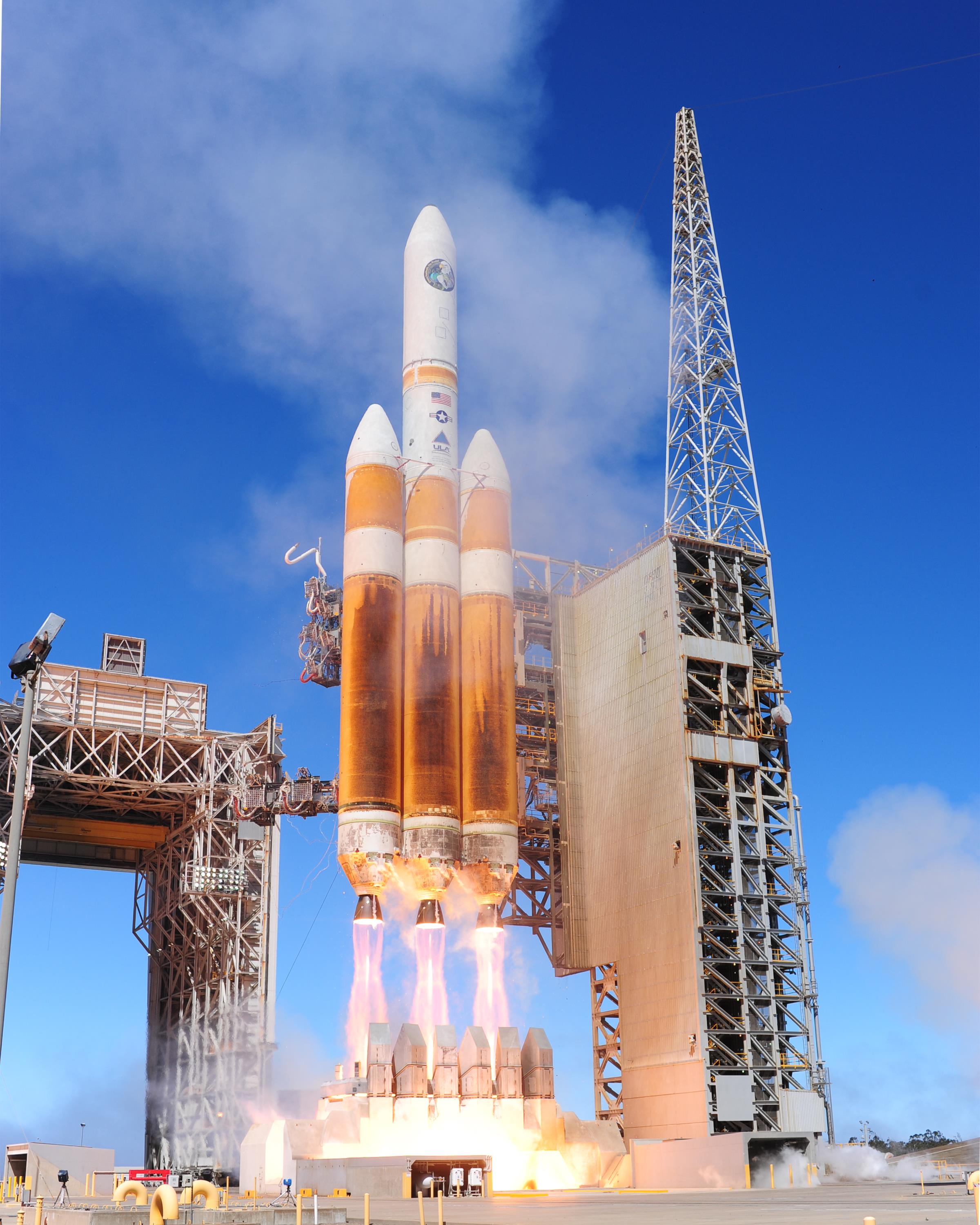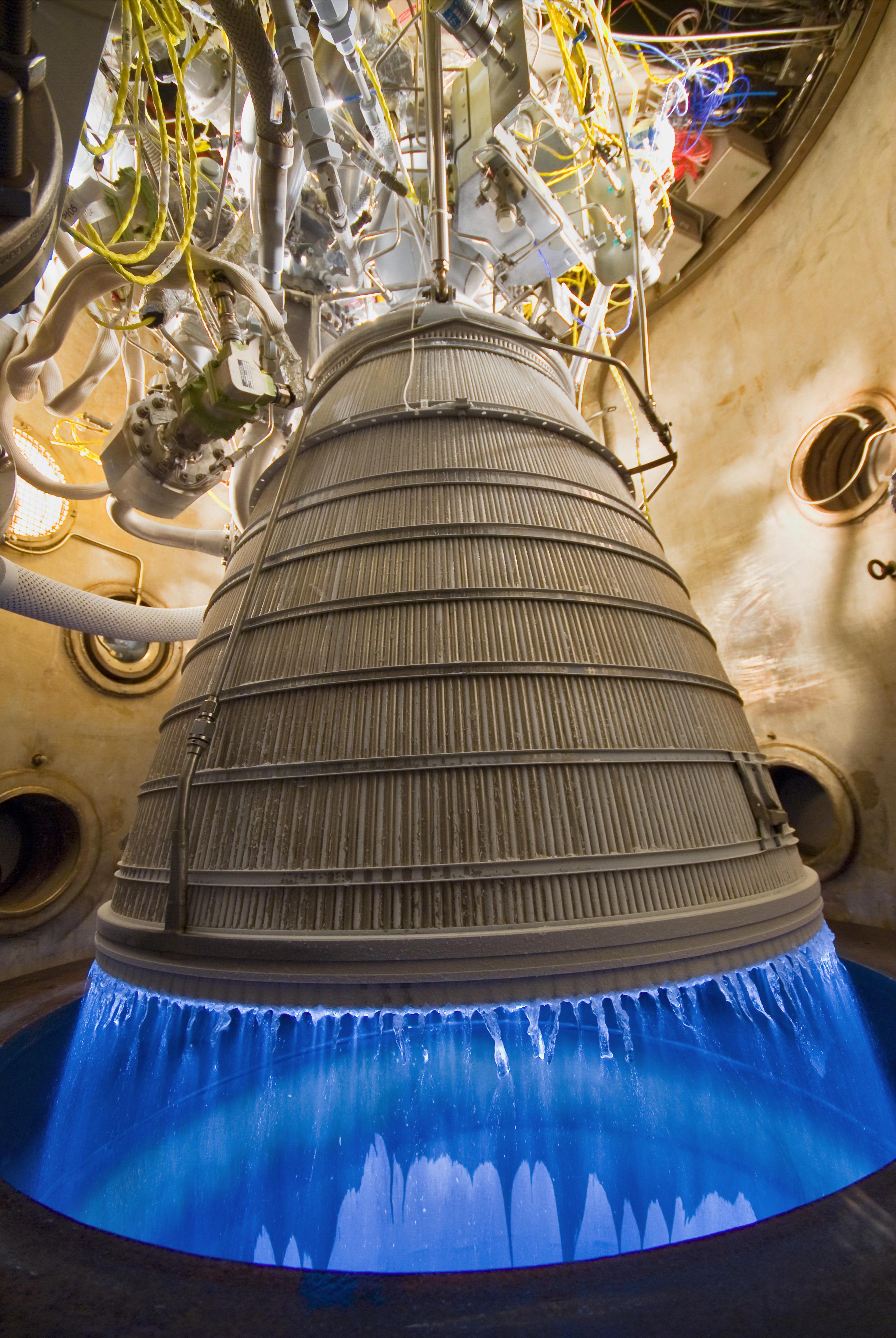|
Delta IV Heavy
The Delta IV Heavy (Delta 9250H) was an expendable heavy-lift launch vehicle, the largest type of the Delta IV family. It had the highest capacity of any operational launch vehicle in the world after the retirement of the Space Shuttle in 2011 until the Falcon Heavy debuted in 2018, and it was the world's third highest-capacity launch vehicle in operation at the time of its retirement in 2024. It was manufactured by United Launch Alliance (ULA) and was first launched in 2004. Delta IV Heavy was the last operating member of the Delta IV family, and its final flight was on 9 April 2024. It is succeeded by the Vulcan Centaur rocket. The Delta IV Heavy first stage consisted of a central Common Booster Core (CBC), with two additional CBCs as liquid rocket boosters instead of the GEM-60 solid rocket motors used by the Delta IV Medium+ versions. At lift-off, all three rocket engines would operate at full thrust, and 44 seconds later the central engine would throttle down to 5 ... [...More Info...] [...Related Items...] OR: [Wikipedia] [Google] [Baidu] |
Vandenberg Space Force Base
Vandenberg Space Force Base , previously Vandenberg Air Force Base, is a United States Space Force Base in Santa Barbara County, California. Established in 1941, Vandenberg Space Force Base is a space launch base, launching spacecraft from the Western Range (USSF), Western Range, and also performs missile testing. The United States Space Force's Space Launch Delta 30 serves as the host delta for the base, equivalent to an Air Force air base Wing (military unit), wing. In addition to its military space launch mission, Vandenberg Space Force Base also hosts space launches for civil and commercial space entities, such as NASA and SpaceX. History United States Army Camp Cooke (1941–1953) In 1941, just before the United States entered World War II, the United States Army embarked on an initiative to acquire lands in the United States to be used to train infantry and armored forces. These areas needed to be of a varied nature to ensure relevant training. In March 1941, the ... [...More Info...] [...Related Items...] OR: [Wikipedia] [Google] [Baidu] |
Orion (satellite)
Orion, also known as Mentor or Advanced Orion, is a class of United States spy satellites that collect signals intelligence (SIGINT) from space. Operated by the National Reconnaissance Office (NRO) and developed with input from the Central Intelligence Agency (CIA), eight have been launched from Cape Canaveral on Titan IV and Delta IV launch vehicles since 1995. Description These satellites at geostationary orbits collect radio emissions (SIGINT) and act as replacements for the older constellation of Magnum satellites. The satellites have estimated mass close to 5,200 kg and very large (estimated 100 m diameter) radio reflecting dishes. USA-223 (NROL-32), which is seen as the fifth satellite in the series, is according to NRO director Bruce Carlson "the largest satellite in the world." It is believed that this refers to the diameter of the main antenna, which might be well in excess of . The mission and capabilities of these satellites are highly c ... [...More Info...] [...Related Items...] OR: [Wikipedia] [Google] [Baidu] |
Vulcan Centaur
Vulcan Centaur is a heavy-lift launch vehicle developed and operated by United Launch Alliance (ULA). It is a two-stage-to-orbit launch vehicle consisting of the Vulcan first stage and the Centaur second stage. Replacing ULA's Atlas V and Delta IV rockets, the Vulcan Centaur is principally designed to meet the needs of the National Security Space Launch (NSSL) program, which supports U.S. intelligence agencies and the Defense Department, but ULA believes it will also be able to price missions low enough to attract commercial launches. ULA began development of the new launch vehicle in 2014, primarily to compete with SpaceX’s Falcon 9 and to comply with a Congressional mandate to phase out the use of the Russian-made RD-180 engine that powered the Atlas V. The first launch of the Vulcan Centaur was initially scheduled for 2019 but faced multiple delays due to developmental challenges with its new BE-4 first-stage engine and the Centaur second-stage. The Vulcan Centaur had ... [...More Info...] [...Related Items...] OR: [Wikipedia] [Google] [Baidu] |
Space Shuttle
The Space Shuttle is a retired, partially reusable launch system, reusable low Earth orbital spacecraft system operated from 1981 to 2011 by the U.S. National Aeronautics and Space Administration (NASA) as part of the Space Shuttle program. Its official program name was the Space Transportation System (STS), taken from the 1969 plan led by U.S. vice president Spiro Agnew for a system of reusable spacecraft where it was the only item funded for development. The first (STS-1) of four orbital test flights occurred in 1981, leading to operational flights (STS-5) beginning in 1982. Five complete Space Shuttle orbiter vehicles were built and flown on a total of 135 missions from 1981 to 2011. They launched from the Kennedy Space Center (KSC) in Florida. Operational missions launched numerous satellites, interplanetary probes, and the Hubble Space Telescope (HST), conducted science experiments in orbit, participated in the Shuttle–Mir program, Shuttle-''Mir'' program with Russia, ... [...More Info...] [...Related Items...] OR: [Wikipedia] [Google] [Baidu] |
Launch Vehicle
A launch vehicle is typically a rocket-powered vehicle designed to carry a payload (a crewed spacecraft or satellites) from Earth's surface or lower atmosphere to outer space. The most common form is the ballistic missile-shaped multistage rocket, but the term is more general and also encompasses vehicles like the Space Shuttle. Most launch vehicles operate from a launch pad, supported by a missile launch control center, launch control center and systems such as vehicle assembly and fueling. Launch vehicles are engineered with advanced aerodynamics and technologies, which contribute to high operating costs. An orbital spaceflight, orbital launch vehicle must lift its payload at least to the boundary of space, approximately and accelerate it to a horizontal velocity of at least . Suborbital spaceflight, Suborbital vehicles launch their payloads to lower velocity or are launched at elevation angles greater than horizontal. Practical orbital launch vehicles use chemical prope ... [...More Info...] [...Related Items...] OR: [Wikipedia] [Google] [Baidu] |
Evolved Expendable Launch Vehicle
National Security Space Launch (NSSL) is a program of the United States Space Force (USSF) intended to assure access to space for United States Department of Defense and other United States government payloads. The program is managed by the Assured Access to Space Directorate (SSC/AA) of the Space Force's Space Systems Command (SSC), in partnership with the National Reconnaissance Office. Started in 1994 as the Evolved Expendable Launch Vehicle launch system program, the initial program goal was to make government space launches more affordable and reliable, leading to the development of the Boeing Delta IV and Lockheed Martin Atlas V EELV families. These remained the primary launch vehicles for U.S. military satellites, and were later joined by the Falcon 9 developed by SpaceX. On 1 March 2019, the program name was changed from EELV to National Security Space Launch (NSSL) to better reflect the growing commercial launch market and the changing nature of launch contracts, inc ... [...More Info...] [...Related Items...] OR: [Wikipedia] [Google] [Baidu] |
RL10
The RL10 is a liquid-fuel cryogenic rocket engine built in the United States by Aerojet Rocketdyne that burns cryogenic liquid hydrogen and liquid oxygen propellants. Modern versions produce up to of thrust per engine in vacuum. RL10 versions were produced for the Centaur upper stage of the Atlas V and the DCSS of the Delta IV. More versions are in development or in use for the Exploration Upper Stage of the Space Launch System and the Centaur V of the Vulcan rocket. The expander cycle that the engine uses drives the turbopump with waste heat absorbed by the engine combustion chamber, throat, and nozzle. This, combined with the hydrogen fuel, leads to very high specific impulses (''I''sp) in the range of in a vacuum. Mass ranges from depending on the version of the engine. History The RL10 was the first liquid hydrogen rocket engine to be built in the United States, with development of the engine by Marshall Space Flight Center and Pratt & Whitney beginning in the 195 ... [...More Info...] [...Related Items...] OR: [Wikipedia] [Google] [Baidu] |
Liquid Oxygen
Liquid oxygen, sometimes abbreviated as LOX or LOXygen, is a clear cyan liquid form of dioxygen . It was used as the oxidizer in the first liquid-fueled rocket invented in 1926 by Robert H. Goddard, an application which is ongoing. Physical properties Liquid oxygen has a clear cyan color and is strongly paramagnetic: it can be suspended between the poles of a powerful horseshoe magnet. Liquid oxygen has a density of , slightly denser than liquid water, and is cryogenic with a freezing point of and a boiling point of at . Liquid oxygen has an expansion ratio of 1:861 and because of this, it is used in some commercial and military aircraft as a transportable source of breathing oxygen. Because of its cryogenic nature, liquid oxygen can cause the materials it touches to become extremely brittle. Liquid oxygen is also a very powerful oxidizing agent: organic materials will burn rapidly and energetically in liquid oxygen. Further, if soaked in liquid oxygen, some materials su ... [...More Info...] [...Related Items...] OR: [Wikipedia] [Google] [Baidu] |
Liquid Hydrogen
Liquid hydrogen () is the liquid state of the element hydrogen. Hydrogen is found naturally in the molecule, molecular H2 form. To exist as a liquid, H2 must be cooled below its critical point (thermodynamics), critical point of 33 Kelvins, K. However, for it to be in a fully liquid state at atmospheric pressure, H2 needs to be cooled to .IPTS-1968 iupac.org, accessed 2020-01-01 A common method of obtaining liquid hydrogen involves a compressor resembling a jet engine in both appearance and principle. Liquid hydrogen is typically used as a concentrated form of hydrogen storage. Storing it as liquid takes less space than storing it as a gas at normal temperature and pressure. However, the liquid density is very low compared to other common fuels. Once liquefied, it can be maintained as a liquid for some time in the ... [...More Info...] [...Related Items...] OR: [Wikipedia] [Google] [Baidu] |
Delta Cryogenic Second Stage
The Delta Cryogenic Second Stage (DCSS) is a family of cryogenic-fuelled rocket stages used on the Delta III, Delta IV, and on the Space Launch System Block 1 launch vehicles. The DCSS employs a unique two-tank architecture where the cylindrical liquid hydrogen (LH2) tank carries payload launch loads and forms the upper section. An oblate spheroid tank filled with liquid oxygen (LOX) and the engine are suspended from the LH2 tank and covered by the interstage during initial launch. The DCSS is powered by a single RL10B-2 engine built by Aerojet Rocketdyne, which features an extendable carbon–carbon nozzle to improve specific impulse. The DCSS was designed by the National Space Development Agency of Japan, based on the second stage it developed for the H-IIA rocket. The initial versions for the Delta III were built by Mitsubishi Heavy Industries in Japan. For the Delta IV, production was transferred to Boeing Integrated Defense Systems and later to United Launch Allian ... [...More Info...] [...Related Items...] OR: [Wikipedia] [Google] [Baidu] |
Vacuum
A vacuum (: vacuums or vacua) is space devoid of matter. The word is derived from the Latin adjective (neuter ) meaning "vacant" or "void". An approximation to such vacuum is a region with a gaseous pressure much less than atmospheric pressure. Physicists often discuss ideal test results that would occur in a ''perfect'' vacuum, which they sometimes simply call "vacuum" or free space, and use the term partial vacuum to refer to an actual imperfect vacuum as one might have in a laboratory or in space. In engineering and applied physics on the other hand, vacuum refers to any space in which the pressure is considerably lower than atmospheric pressure. The Latin term ''in vacuo'' is used to describe an object that is surrounded by a vacuum. The ''quality'' of a partial vacuum refers to how closely it approaches a perfect vacuum. Other things equal, lower gas pressure means higher-quality vacuum. For example, a typical vacuum cleaner produces enough suction to reduce air pressur ... [...More Info...] [...Related Items...] OR: [Wikipedia] [Google] [Baidu] |
Sea Level
Mean sea level (MSL, often shortened to sea level) is an mean, average surface level of one or more among Earth's coastal Body of water, bodies of water from which heights such as elevation may be measured. The global MSL is a type of vertical datuma standardised geodetic datumthat is used, for example, as a chart datum in cartography and Navigation, marine navigation, or, in aviation, as the standard sea level at which atmospheric pressure is measured to Calibration, calibrate altitude and, consequently, aircraft flight levels. A common and relatively straightforward mean sea-level standard is instead a long-term average of tide gauge readings at a particular reference location. The term ''above sea level'' generally refers to the height above mean sea level (AMSL). The term APSL means above present sea level, comparing sea levels in the past with the level today. Earth's radius at sea level is 6,378.137 km (3,963.191 mi) at the equator. It is 6,356.752 km (3,94 ... [...More Info...] [...Related Items...] OR: [Wikipedia] [Google] [Baidu] |








